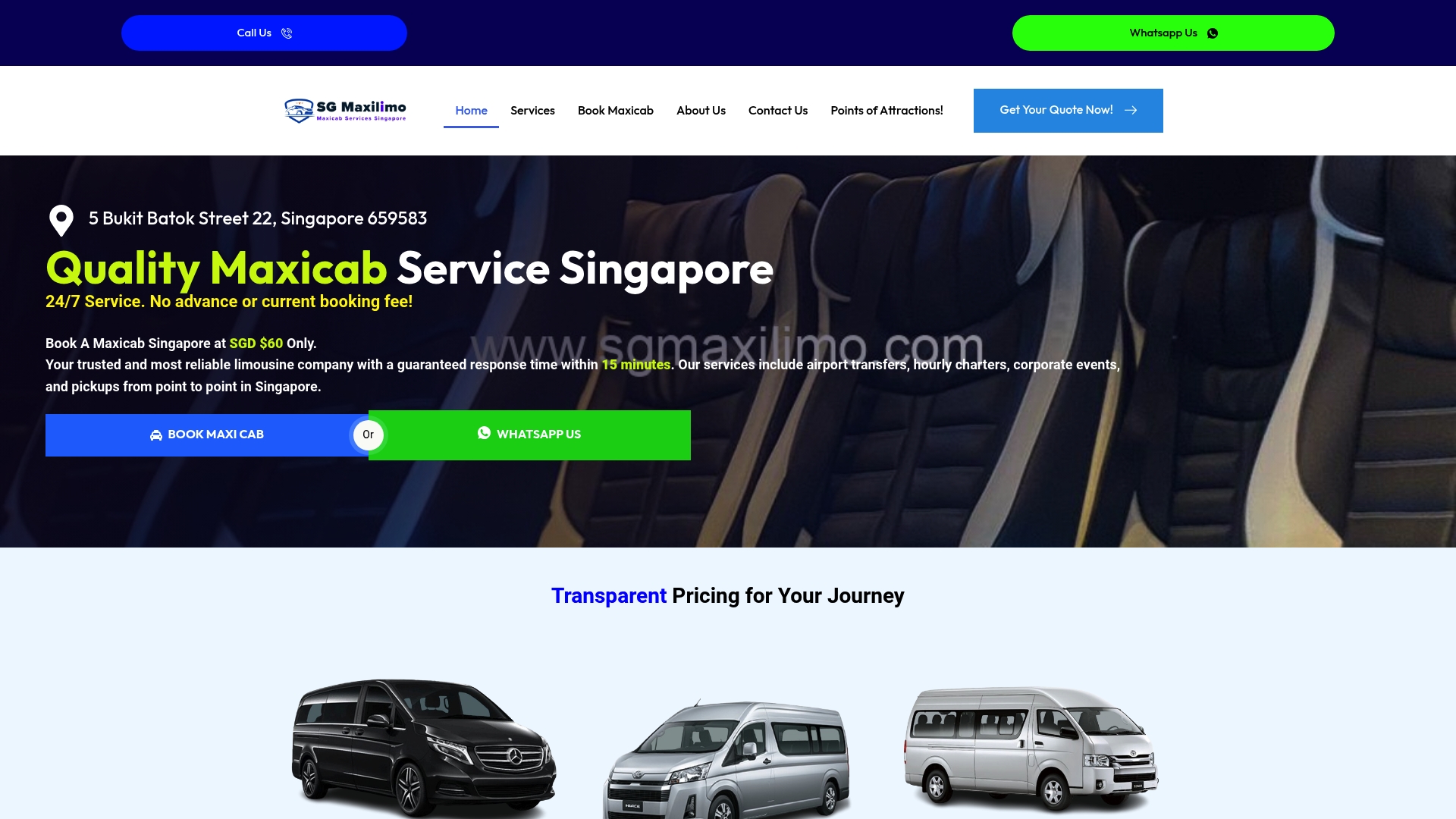How to Improve Sustainability in Transport for All
Discover practical ways to boost sustainability in transport for business travelers, families, and organizers, making travel easier and more eco-friendly.

Transportation is responsible for about 29 percent of all greenhouse gas emissions in the United States, making it the single largest source. Most people think that cutting car trips or switching to electric vehicles are the only ways to go green. The reality is much bigger. The most surprising changes happen when cities, companies, and even individual travelers rethink how every journey fits into a smarter, cleaner system—and some of the easiest shifts can start with habits you already have.
Table of Contents
- Understanding Sustainability In Transport Today
- Eco-Friendly Travel Options For Different Needs
- How Businesses And Events Can Go Green
- Simple Steps For Individuals To Make A Difference
Quick Summary
| Takeaway | Explanation |
|---|---|
| Adopt public transit for sustainability | Utilizing public transportation can significantly reduce your carbon footprint by moving people efficiently and minimizing emissions. |
| Encourage alternative commute methods | Prioritizing biking, walking, or carpooling decreases reliance on personal vehicles, which is beneficial for the environment. |
| Implement vehicle maintenance | Regularly servicing and maintaining your vehicle enhances fuel efficiency, ultimately lowering emissions and saving money. |
| Utilize emerging mobility technologies | Innovative apps and services like ride-sharing, electric scooters, and bike-sharing empower eco-friendly transportation choices for individuals. |
| Support corporate sustainability strategies | Businesses can adopt green transportation policies to lower their environmental impact while enhancing their brand reputation and employee engagement. |
Understanding Sustainability in Transport Today
Sustainability in transport represents a critical frontier in addressing global environmental challenges and reshaping how people and goods move across communities. The transportation sector stands as a significant contributor to global carbon emissions, making innovative approaches to mobility essential for creating a more environmentally responsible future.
The Current Environmental Impact of Transportation
Transportation accounts for approximately 29% of total greenhouse gas emissions in the United States, making it a pivotal area for sustainability efforts. According to the U.S. Department of Energy, sustainable transportation strategies offer multiple benefits beyond environmental protection. These include significant cost savings, reduced air pollution, job creation, improved accessibility, and enhanced energy security.
The environmental challenges are complex. Traditional transportation systems heavily rely on fossil fuels, which contribute substantially to climate change. Passenger vehicles, commercial trucks, airplanes, and maritime vessels collectively create substantial carbon footprints that accelerate global warming and environmental degradation.
Integrated Approaches to Sustainable Mobility
The U.S. Environmental Protection Agency emphasizes the importance of integrating transportation and land use planning to create multi-modal mobility opportunities. This approach enables communities to develop more efficient transportation networks that reduce overall emissions and provide residents with diverse transportation choices.
Key strategies for sustainable transport include:
- Electric Vehicle Adoption: Transitioning from fossil fuel powered vehicles to electric alternatives
- Public Transit Enhancement: Developing robust, efficient public transportation systems
- Urban Design Transformation: Creating compact, walkable communities that minimize transportation requirements
Sustainability in transport is not just about technological solutions but also about reimagining how we conceptualize mobility. It requires a holistic approach that considers environmental impact, social equity, economic feasibility, and technological innovation.
The Future of Sustainability in Transport
Innovative technologies and changing social attitudes are driving significant transformations in transportation sustainability. From advanced battery technologies to intelligent transportation systems, the future promises more environmentally friendly mobility solutions. Companies and governments worldwide are investing in research and development to create transportation methods that minimize environmental impact while maintaining efficiency and accessibility.
The journey toward sustainable transport is complex but essential. It demands collaboration between policymakers, technology developers, urban planners, and citizens to create comprehensive solutions that address environmental challenges while meeting diverse mobility needs.
Eco-Friendly Travel Options for Different Needs
Travelers today have an increasing array of sustainable transportation options that cater to diverse needs while minimizing environmental impact. From urban commuters to family travelers, eco-friendly mobility solutions are transforming how people move and connect.
Public Transit as a Solution for Sustainability in Transport
The National Academies of Sciences, Engineering, and Medicine highlight the critical role of public transportation in creating environmentally friendly mobility. Public transit systems offer significant advantages for sustainability, reducing individual carbon footprints by moving large numbers of people efficiently.
Modern public transit options have evolved to meet varied traveler requirements. Electric buses, hybrid trains, and integrated transit networks provide flexible, low-emission transportation solutions. These systems not only reduce greenhouse gas emissions but also help decrease traffic congestion and minimize individual transportation costs.
Transportation Demand Management Strategies
Transportation demand management represents an innovative approach to sustainable mobility. This strategy focuses on optimizing transportation system efficiency by redistributing travel demand and promoting alternative transportation methods.
Key strategies include:
- Carpooling Programs: Reducing individual vehicle usage
- Flexible Work Schedules: Minimizing peak transportation hours
- Remote Work Options: Decreasing overall transportation requirements
These approaches help individuals and organizations reduce their environmental impact while maintaining mobility and productivity.
Emerging Sustainable Travel Technologies
The Federal Highway Administration emphasizes the importance of integrating innovative technologies to promote sustainable transportation. Electric vehicles, bike-sharing programs, and smart mobility applications are revolutionizing how people approach travel.
Emergent technologies offer personalized sustainable travel solutions. Electric scooters, advanced bicycle infrastructure, and integrated mobility platforms provide travelers with multiple eco-friendly options. These technologies enable individuals to choose transportation methods that align with their specific needs while contributing to broader environmental conservation efforts.
To help readers compare different eco-friendly travel strategies outlined in this section, the table below summarizes key approaches, their main benefits, and specific examples mentioned in the article.
| Approach | Main Benefit | Example(s) |
|---|---|---|
| Public Transit Enhancement | Lowers emissions & congestion | Electric buses, hybrid trains |
| Carpooling Programs | Reduces individual vehicle use | Employer-sponsored carpooling |
| Flexible/Remote Work | Minimizes travel demand | Telecommuting, flexible hours |
| Micro-Mobility Solutions | Provides individualized green travel | Electric scooters, bike-sharing |
| Ride-Sharing Platforms | Increases shared trips, less carbon | App-based ride-sharing (Uber, Lyft, etc) |
| Integrated Mobility Apps | Streamlines sustainable options | Mobility platforms integrating transport |
The future of sustainable travel lies in creating flexible, accessible, and environmentally conscious transportation ecosystems that serve diverse user requirements. By embracing these innovative approaches, individuals can significantly reduce their carbon footprint while enjoying convenient and efficient mobility solutions.
How Businesses and Events Can Go Green
Businesses and event organizers play a crucial role in driving sustainability in transportation. By implementing strategic approaches and innovative solutions, organizations can significantly reduce their environmental footprint while demonstrating corporate social responsibility and leadership in sustainability.
Corporate Transportation Strategies
Companies are increasingly recognizing the importance of sustainable transportation as a key component of their environmental strategy. Implementing green transportation policies goes beyond simple cost reduction and represents a commitment to environmental stewardship.
Effective corporate strategies include:
- Employee Commute Programs: Developing incentives for carpooling, public transit use, and remote work
- Fleet Electrification: Transitioning company vehicles to electric or hybrid models
- Carbon Offset Initiatives: Investing in programs that neutralize transportation-related emissions
These approaches not only reduce environmental impact but also enhance corporate reputation and employee engagement. By providing sustainable transportation options, businesses can attract environmentally conscious talent and demonstrate their commitment to global sustainability goals.
Sustainable Event Transportation Planning
The Rice Gazette highlights innovative approaches for event organizers to minimize transportation-related environmental impacts. Event planners can implement comprehensive strategies that reduce carbon emissions and promote eco-friendly mobility.
Key approaches for sustainable event transportation include:
- Integrated Shuttle Services: Providing efficient, low-emission transportation for event attendees
- Ride-Sharing Platforms: Encouraging collaborative transportation options
- Location Selection: Choosing venues with excellent public transit access
- Digital Ticketing: Minimizing paper waste and supporting efficient transportation management
Technology and Innovation in Green Transportation
Advanced technologies are transforming how businesses approach sustainable transportation. Intelligent mobility solutions, real-time tracking systems, and data-driven transportation planning enable organizations to optimize their mobility strategies.
Innovative technologies supporting green transportation include:
- AI-Powered Route Optimization: Reducing fuel consumption and emissions
- Electric Vehicle Charging Infrastructure: Supporting corporate electric vehicle adoption
- Smart Mobility Platforms: Integrating various transportation modes for maximum efficiency
Businesses that embrace these technological solutions can create more sustainable, efficient, and cost-effective transportation ecosystems. The integration of technology with strategic planning allows organizations to significantly reduce their environmental impact while maintaining operational effectiveness.
The transition to sustainable transportation is not just an environmental imperative but also a strategic opportunity for businesses and event organizers. By adopting innovative approaches, leveraging technology, and prioritizing eco-friendly mobility, organizations can lead the way in creating a more sustainable future for transportation.
Simple Steps for Individuals to Make a Difference
Individuals have significant power to contribute to sustainability in transport through conscious choices and everyday actions. While systemic changes are crucial, personal decisions can collectively create meaningful environmental impact and drive broader transportation transformation.
Transportation Choices and Personal Impact
The U.S. Environmental Protection Agency provides clear guidance on how individuals can reduce their transportation carbon footprint. Personal transportation decisions represent one of the most direct ways people can contribute to environmental sustainability.
Key personal transportation strategies include:
- Alternative Commute Methods: Prioritizing walking, cycling, and public transit
- Carpooling: Reducing individual vehicle emissions
- Remote Work: Minimizing daily travel requirements
These choices not only reduce carbon emissions but also offer personal health and financial benefits. By reimagining personal mobility, individuals can make substantial contributions to environmental conservation.
Vehicle Efficiency and Maintenance
Stanford University’s Understand Energy program emphasizes the importance of vehicle maintenance in improving overall transportation sustainability. Simple maintenance techniques can significantly enhance fuel efficiency and reduce environmental impact.
Practical vehicle efficiency strategies include:
- Tire Maintenance: Keeping tires properly inflated can improve fuel economy by up to 10%
- Weight Reduction: Removing unnecessary weight can enhance fuel efficiency by 1-25%
- Regular Servicing: Ensuring vehicles operate at peak performance
These maintenance practices not only reduce environmental impact but also help individuals save money on fuel and vehicle upkeep.
The following table organizes practical vehicle efficiency and maintenance tips for individuals aiming to reduce emissions and save money, as discussed in this section.
| Maintenance Tip | Environmental Impact | Additional Benefit |
|---|---|---|
| Proper Tire Inflation | Improves fuel economy (up to 10%) | Longer tire life |
| Weight Reduction | Enhanced efficiency (1-25%) | Better vehicle handling |
| Regular Servicing | Ensures peak performance | Prevents costly repairs |
Technology and Personal Mobility Solutions
Emerging technologies and mobile applications are empowering individuals to make more sustainable transportation choices. Ride-sharing platforms, electric scooter services, and integrated mobility apps provide flexible, eco-friendly alternatives to traditional transportation methods.
Innovative personal mobility solutions include:
- Micro-Mobility Services: Electric scooters and bike-sharing programs
- Mobility Apps: Platforms that integrate multiple transportation options
- Electric Vehicle Sharing: Community-based electric vehicle access
These technological innovations make sustainable transportation more accessible and convenient for individuals, breaking down barriers to eco-friendly mobility.
Every individual action matters in the broader context of transportation sustainability. By making conscious choices, leveraging technology, and prioritizing efficiency, people can play a crucial role in driving environmental change. The collective impact of personal decisions can create significant momentum toward a more sustainable transportation future.
Frequently Asked Questions
What are some effective ways to improve sustainability in transportation?
Utilizing public transit, adopting alternative commute methods like biking or carpooling, ensuring regular vehicle maintenance, and leveraging emerging mobility technologies can all help enhance transportation sustainability.
How can public transit contribute to reducing greenhouse gas emissions?
Public transit systems move large numbers of people efficiently, lowering individual carbon footprints and reducing overall emissions by minimizing reliance on personal vehicles.
What are transportation demand management strategies?
Transportation demand management strategies aim to optimize the efficiency of transportation systems by promoting alternative methods such as carpooling, flexible work schedules, and remote work options to reduce travel demand.
How can individuals contribute to a more sustainable transportation future?
Individuals can make conscious transportation choices by using public transit, carpooling, cycling, maintaining their vehicles for better fuel efficiency, and utilizing personal mobility technologies like ride-sharing apps and electric scooters.
Make Sustainable Travel Effortless with SG Maxi Limo
Are you searching for ways to lower your carbon footprint and make transportation more sustainable while never compromising on comfort or convenience? The article showed how eco-friendly travel starts with smarter choices like efficient vehicle use, choosing shared rides, group travel, and seamlessly meeting special needs. If you are concerned about vehicle emissions, unpredictable journeys, or lack of access for all travelers, it is time for a reliable solution tailored to Singapore’s unique transportation landscape. Maximize every trip’s positive impact and make greener choices that fit your group, your event, or your family’s situation.

Ready to act on your commitment to sustainable, accessible, and dependable transportation? Book a maxi cab or limousine today and experience a smooth, spacious ride perfect for airport transfers, group outings, or special events. You get transparent pricing, professional service, and options for every need including wheelchair-accessible vehicles. Your greener travel experience starts with SG Maxi Limo. Visit SG Maxi Limo’s website now to secure an eco-conscious ride and set a new standard for responsible mobility in Singapore.






